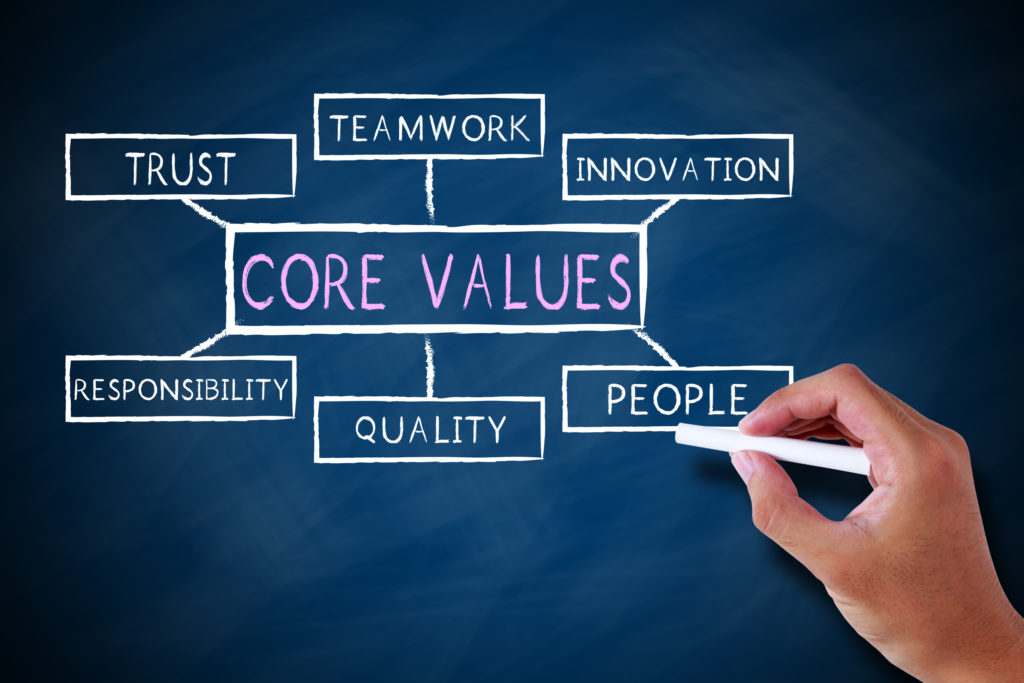An organization is only as good as its culture—and building that culture is not only a role for HR, it’s every manager’s and employee’s responsibility. You can help make your organization a more supportive and engaging place to work by understanding the perceptual, institutional, and psychological processes that impact the ways people interact with each other.

Cultural competence refers to an ability to interact effectively with people of different cultures and socio-economic backgrounds, particularly in the context of human resources, non-profit organizations, and government agencies whose employees work with persons from different cultural/ethnic backgrounds.

Cultural competence comprises four components:
- Awareness of one’s own cultural worldview
- Attitude towards cultural differences
- Knowledge of different cultural practices and worldviews
- Cross-cultural skills
Developing cultural competence results is an ability to understand, communicate with, and effectively and authentically interact with people across cultures.
Research shows that engagement is the key factor that promotes higher performance and effort, greater returns, and lower turnover. Yet across companies, industries, and countries, studies show that only 11-19% of employees are highly engaged.
Cross-cultural teamwork has many benefits. But, working in a culturally diverse environment sometimes comes with differences of opinion and tension. Relating better to people you work with, so you can get things done is a realistic objective with obvious benefits. However, the culture of your workplace dictates any possible strategy or culturally competent set mind.

Researchers identified four broad cultural competency domains that experts use to create successful cross-cultural relationships.
Diplomatic Mindset
Diplomacy is the art of dealing with people in a thoughtful and effective way. Though it’s often talked about in connection with international relationships, diplomacy and tact can be applied to every interaction we have with people from other cultures or social backgrounds.
A diplomatic mindset starts with a focus on what you are trying to accomplish. And recognizing that you need to work with diverse others to meet your goals. It means being aware of your own worldview and realizing that your own background shapes how you see things.
Doing so helps you understand how you are viewed by the person you are interacting with. It also helps you manage your own attitudes toward the other person’s culture. Making it easier to find ways to get the job done despite your differences.
Cultural Learning
Professionals who successfully navigate cross-cultural relationships actively learn cultural norms, language and customs in an ongoing fashion. There’s far too much to know about peoples and cultures to think that you can read a book or take a class and be done with it.
It is important to deliberately seek out the experiences and relationships that will advance you cultural understanding rather than remaining fixed in your own narrow experience. It’s also important to remain sensitive to the limits and biases of your guides. Hence, consult and check a variety of sources such as web sites, books (even fiction), local informants, and colleagues to get a full understanding of the range of views within a culture.
Cultural learning does not only take place in preparation for an interaction, it continues afterward as well. Professionals often seek feedback from natives of their host country after an experience to find out what they got wrong and what they could do better in the future.
Cultural Reasoning
Cultural reasoning helps you make sense of cultural behaviors that initially seem odd. Like a scientist with an unexpected result, treat puzzling behaviors as opportunities to deepen your understanding of the culture. Dig in and figure out why they do what they do.
If you’re walking into a situation completely fresh, with no context to draw from, all is not lost. Taking a moment to reflect on the ‘why’ likely leads you to discover a few possible alternatives.
Maybe she was trying to get a read on your personal values to gauge how well you’ll work together. Or, maybe he was trying to get a rise out of you, to get a sense of how well you manage conflict.
It may not be possible to figure out a person’s real motivation is in the moment. But, with practice, you’ll find that you can regularly take the point of view of diverse people you’re working with. You can more readily consider their beliefs and desires in the moment and use that perspective to work together more effectively.
Once you discover people’s beliefs and motives, you’re in a better position to spot the differences that cause misunderstandings and conflict. And, you have your hands on the levers to influence their perceptions and decisions if you need to.

Intercultural Interaction
Showing you’ve taken the time to learn a custom or bit of language goes a long way to build rapport with someone from a different culture. Yet, it’s natural to feel awkward and uncertain, or even silly, and so avoid giving it a try. Fortunately, there is a natural tendency for people to positively respond to someone’s attempts to address language and cultural norms, regardless of their performance level.
For example, using a customary greeting in a person’s native tongue will be seen positively even if it hits the limit of your language skills.
The connection begins in the attempt. Mastery happens over time.
No matter how much you’ve planned, sometimes interactions go poorly. People from other cultures sometimes want fundamentally different things than you. And, as is the case within any group of people, sometimes they really are just rude.
Cross-cultural experts draw on deep reserves of discipline to face these situations. They manage their reactions and the impression they make, which often earns them greater respect in the process.

How to cultivate cultural competence within your team or organization
You might be able to influence the cultural competence of others within your team or organization. Here are four ways you can get started:
- Make cultural competence part of your team or organization’s narrative
To do that, include cultural competence in your policies, mission or vision statements, project plans, and other resources or documents that define your expectations for your people. Be sure to get buy-in from key stakeholders and influencers within your team or organization. They are the ones who will take your vision from paper and to practice. This is crucial. If you do not have buy in from your key stakeholders, you will not be able to move forward.
Recognize and reward instances of cultural competence. Even if it’s just with positive attention.
2. Deliberately foster dialogue with and between teammates or subordinates around cultural issues
To get the conversation started, you can share this article. You might organize discussions of cultural issues or experiences around the following activities:
- Get people to report on cultural surprises that occur within the context of your work.
- Discuss them as a group.
- Try to take the cultural other’s perspective.
- Come up with some alternative hypotheses about the beliefs and motivations behind the behaviors.
- Locate cultural mentors inside or outside your team or organization and ask them questions.
- Compare their answers.
Discussions like this can help you set or define a positive vision. Seeing examples of outcomes of handling intercultural interactions wisely will motivate your people to improve their cultural competence.
3. Provide cultural competence instruction and other professional development
Incorporating a cross-cultural training program can be a reasonable option, if it’s done well. Do you have someone who develops or delivers cultural competence or diversity instruction within your team or organization? Or, are you evaluating existing options on the market?
In either case, be sure the people who develop the content you use:
- Understand what cultural competence is.
- Promote the specific cultural skills and knowledge that are important for your people to learn.
- Give examples of how cultural competence will change and improve the ways your people do their jobs.
When you talk to instruction developers or vendors, you can use the competencies in this article as a starting point for describing the positive behaviors you expect within your team or organization.
4. Set realistic objectives for the change you want to see.
It’s important to keep in mind that developing cultural competence is not a one-shot enterprise. It takes time and practice. No single book, article, workshop, course, or even immersion is going to get the job done.
Use the information in this article to define a specific and realistic vision for the changes you want to see within your team or organization. And, make a plan for how you will sustain and advance your people’s cultural competence.
How to Avoid Pandering and Pitfalls
When you engage with people from other cultures, it can be tempting to think that you can’t be yourself. You might even feel that you need to pretend to be someone who’s willing to go along with pretty much anything.
The thing is, people in other cultures are people too. They have likes and dislikes just like you. And, they can sense when you’re not being real.
Similarly, studying up on other expressions, customs, and interests is great. But it’s important to think carefully about how you use that information.
Picking up others’ gestures or attire can sometimes seem like mocking or intruding on another’s identity.
There’s a fine line between paying respect and pandering. You have to read reactions and adapt to circumstances.
Instead, be yourself. If you’re genuine, people pick up on that and appreciate it and will support you no matter what.
Regardless of your industry or the type of workplace in which you are employed, cultural competence plays an important role in your daily environment. As a leader or part of a team, recognizing and dealing cultural differences will create a more productive workplace as well as a happier setting for everyone who is there.
In today’s modern world, cultural competence is a necessity for everyone.


